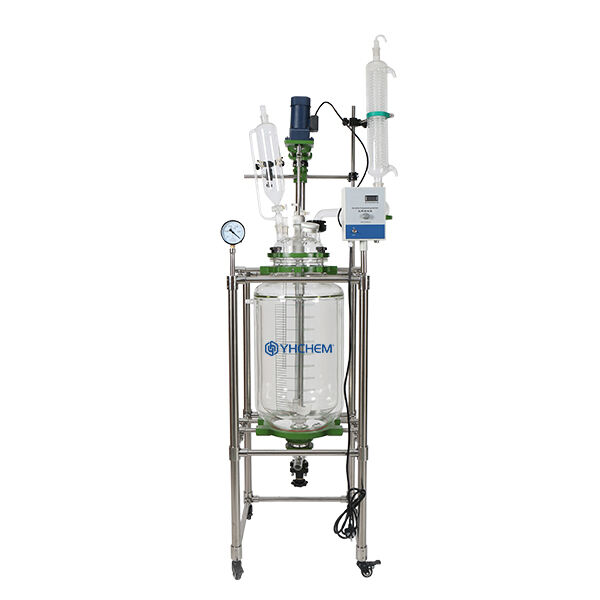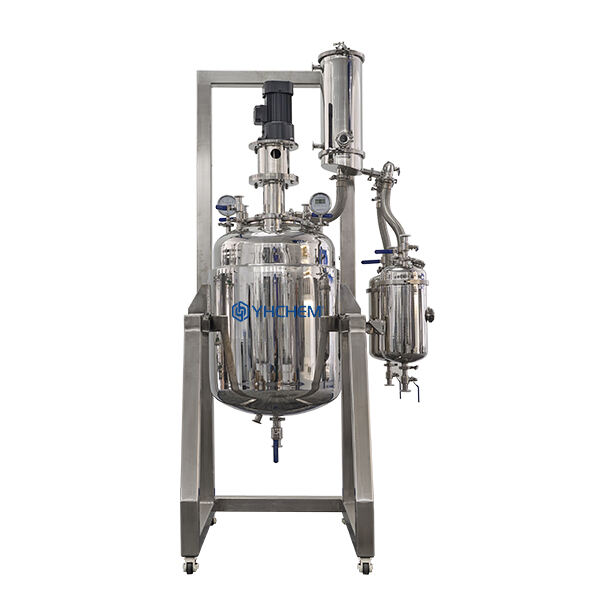Details of Reactor Selection


The reactor, as an indispensable key equipment in modern industrial production, is the core carrier of chemical reactions. Through precise structural design and parameter configuration, it can meet various process requirements such as mixing, dissolution, reaction, concentration and evaporation, and is widely used in fine chemicals, biopharmaceuticals, food and agriculture, new energy and other industries. The previous article discussed the initial selection of the material of the reaction vessel and the heat transfer system, etc. After determining the reaction type and application scenario, the functional selection should be carried out.
1. Stirring function
First, regarding the stirring function, different types of stirring paddles correspond to different application scenarios. YHChem reactors offer a wide range of stirring paddle types for selection. The following lists some common stirring paddle types and their applicable scenarios:
Paddle Impeller:
It has a simple structure and low rotational speed, making it suitable for uniform mixing and dissolution reactions of aqueous solutions, dilute emulsions and suspensions in the pharmaceutical and food industries.
Propeller Impeller:
The blades are helical in shape and mainly flow axially. They are suitable for scenarios such as solution dilution and solid particle suspension that require rapid mixing and heat transfer, and can achieve low-energy consumption circulation requirements in large-volume reaction vessels.
Turbine Impeller:
The high shear force design, featuring both radial and axial flow, is suitable for situations requiring high shear dispersion such as emulsification (in the cosmetics industry) and solid-liquid suspension (in nanomaterials), and is also applicable to the efficient mixing of cell culture media in the pharmaceutical industry.
Anchor/Frame Impeller:
The blades are in close contact with the reactor wall, eliminating dead corners. They are suitable for high-viscosity materials such as polymer melting and resin synthesis, and can prevent the coking of paste materials on the reactor wall and the deposition of slurry.
In addition to traditional stirring paddles, YHChem also offers emulsifiers, ultrasonic homogenizers and other accessories as additional stirring devices to meet the needs of special processes.
2. Design of the Reactor Structure
When designing the basic reactor structure, the total volume is first calculated based on the feeding amount and combined with the loading coefficient, and then the diameter-to-height ratio is optimized according to the viscosity of the material.
Low viscosity (<500cP) : diameter-to-height ratio 1:1.5 to 1:2 (enhances axial mixing efficiency);
High viscosity (>5000cP) : diameter-to-height ratio 1:1 to 1:1.5 (reducing mixing dead corners).
Secondly, there is the calculation of shaft strength and power:
Torque formula: T=K_T·ρ·N²·D^5, where N is the rotational speed (rps) and D is the pitch diameter (m). High-viscosity materials need to increase the power redundancy (safety factor 1.5-2);
Axial diameter design: d≥(16T/πτ)^(1/3). The value of shear stress τ should take into account the fatigue effect caused by viscosity (for example, τ≤80MPa for 316L stainless steel).
Finally, there are some detailed optimizations:
For high-viscosity materials, a discharge valve without dead corners (with an outlet diameter of ≥100mm) and an inclination Angle of ≥30° should be adopted to avoid residue.
The position of the thermometer sleeve should avoid the high-shear area (more than 0.3-D away from the stirring paddle, where D is the paddle diameter (ml).
3. Temperature Control Function
The selection of a temperature control system mainly includes the requirements for heating and cooling rates and the cooling and heat demands of the reaction process. The high-temperature temperature control products of YHChem Standard can provide temperature control from room temperature to a maximum of 300℃, with a heating capacity of up to 60kw. The low-temperature products can provide a minimum temperature of -120℃, with a cooling capacity of up to 78kw and a temperature control accuracy of ±0.5℃.
In addition, you may also have requirements such as cleaning inside the reactor, parameter monitoring, explosion-proof, ventilation, data storage, export or external control, etc. These requirements will be fulfilled by some additional accessories. You need to contact YHChem's sales or pre-sales engineers, who will customize them for you based on your specific needs and their rich working experience.

 EN
EN
 AR
AR
 BG
BG
 HR
HR
 DA
DA
 NL
NL
 FI
FI
 FR
FR
 DE
DE
 EL
EL
 HI
HI
 IT
IT
 JA
JA
 KO
KO
 NO
NO
 PL
PL
 PT
PT
 RO
RO
 RU
RU
 ES
ES
 SV
SV
 TL
TL
 ID
ID
 SR
SR
 UK
UK
 HU
HU
 TH
TH
 TR
TR
 GA
GA
 BE
BE
 BN
BN
